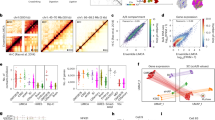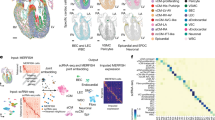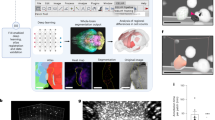Abstract
The light microscope is traditionally an instrument of substantial size and expense. Its miniaturized integration would enable many new applications based on mass-producible, tiny microscopes. Key prospective usages include brain imaging in behaving animals for relating cellular dynamics to animal behavior. Here we introduce a miniature (1.9 g) integrated fluorescence microscope made from mass-producible parts, including a semiconductor light source and sensor. This device enables high-speed cellular imaging across ∼0.5 mm2 areas in active mice. This capability allowed concurrent tracking of Ca2+ spiking in >200 Purkinje neurons across nine cerebellar microzones. During mouse locomotion, individual microzones exhibited large-scale, synchronized Ca2+ spiking. This is a mesoscopic neural dynamic missed by prior techniques for studying the brain at other length scales. Overall, the integrated microscope is a potentially transformative technology that permits distribution to many animals and enables diverse usages, such as portable diagnostics or microscope arrays for large-scale screens.
This is a preview of subscription content, access via your institution
Access options
Subscribe to this journal
Receive 12 print issues and online access
$259.00 per year
only $21.58 per issue
Buy this article
- Purchase on Springer Link
- Instant access to full article PDF
Prices may be subject to local taxes which are calculated during checkout





Similar content being viewed by others
References
Arthur, W.B. The Nature of Technology: What It Is and How It Evolves. (Free Press, 2009).
Wilt, B.A. et al. Advances in light microscopy for neuroscience. Annu. Rev. Neurosci. 32, 435–506 (2009).
Helmchen, F., Fee, M., Tank, D. & Denk, W. A miniature head-mounted two-photon microscope: high-resolution brain imaging in freely moving animals. Neuron 31, 903–912 (2001).
Mukamel, E.A., Nimmerjahn, A. & Schnitzer, M.J. Automated analysis of cellular signals from large-scale calcium imaging data. Neuron 63, 747–760 (2009).
Dombeck, D.A., Khabbaz, A.N., Collman, F., Adelman, T.L. & Tank, D.W. Imaging large-scale neural activity with cellular resolution in awake, mobile mice. Neuron 56, 43–57 (2007).
Flusberg, B.A. et al. High-speed, miniaturized fluorescence microscopy in freely moving mice. Nat. Methods 5, 935–938 (2008).
Sawinski, J. et al. Visually evoked activity in cortical cells imaged in freely moving animals. Proc. Natl. Acad. Sci. USA 106 19557–19562 (2009).
Andermann, M.L., Kerlin, A.M. & Reid, R.C. Chronic cellular imaging of mouse visual cortex during operant behavior and passive viewing. Front. Cell Neurosci. 4, 3 (2010).
Nimmerjahn, A., Mukamel, E.A. & Schnitzer, M.J. Motor behavior activates Bergmann glial networks. Neuron 62, 400–412 (2009).
Hayden, E.C. Microscopic marvels: microscope for the masses. Nature 459, 632–633 (2009).
Rogers, J.D. et al. Imaging performance of a miniature integrated microendoscope. J. Biomed. Opt. 13, 054020 (2008).
Breslauer, D.N., Maamari, R.N., Switz, N.A., Lam, W.A. & Fletcher, D.A. Mobile phone based clinical microscopy for global health applications. PLoS ONE 4, e6320 (2009).
Cui, X. et al. Lensless high-resolution on-chip optofluidic microscopes for Caenorhabditis elegans and cell imaging. Proc. Natl. Acad. Sci. USA 105, 10670–10675 (2008).
Seo, S., Su, T., Tseng, D.K., Erlinger, A. & Ozcan, A. Lensfree holographic imaging for on-chip cytometry and diagnostics. Lab Chip 9, 777–787 (2009).
El Gamal, A. & Eltoukhy, H. CMOS image sensors. IEEE Circuits and Devices Magazine 21, 6–20 (2005).
Andersson, G. & Armstrong, D.M. Complex spikes in Purkinje-cells in the lateral vermis (B-zone) of the cat cerebellum during locomotion. J. Physiol. 385, 107–134 (1987).
Leicht, R. & Schmidt, R.F. Somatotopic studies on the vermal cortex of the cerebellar anterior lobe of unanesthetized cats. Exp. Brain Res. 27, 479–490 (1977).
Jorntell, H., Ekerot, C., Garwicz, M. & Luo, X.L. Functional organization of climbing fibre projection to the cerebellar anterior lobe of the rat. J. Physiol. 522, 297–309 (2000).
Glickstein, M., Sultan, F. & Voogd, J. Functional localization in the cerebellum. Cortex 47, 59–80 (2011).
Ozden, I., Lee, H.M., Sullivan, M.R. & Wang, S.S. Identification and clustering of event patterns from in vivo multiphoton optical recordings of neuronal ensembles. J. Neurophysiol. 100, 495–503 (2008).
Raymond, J.L., Lisberger, S.G. & Mauk, M.D. The cerebellum: a neuronal learning machine? Science 272, 1126–1131 (1996).
Ozden, I., Sullivan, M.R., Lee, H.M. & Wang, S.S. Reliable coding emerges from coactivation of climbing fibers in microbands of cerebellar Purkinje neurons. J. Neurosci. 29, 10463–10473 (2009).
Apps, R. & Garwicz, M. Anatomical and physiological foundations of cerebellar information processing. Nat. Rev. Neurosci. 6, 297–311 (2005).
Lyons, D.A. et al. erbb3 and erbb2 are essential for Schwann cell migration and myelination in zebrafish. Curr. Biol. 15, 513–524 (2005).
Pogoda, H.M. et al. A genetic screen identifies genes essential for development of myelinated axons in zebrafish. Dev. Biol. 298, 118–131 (2006).
Pepperkok, R. & Ellenberg, J. High-throughput fluorescence microscopy for systems biology. Nat. Rev. Mol. Cell Biol. 7, 690–696 (2006).
Kachouie, N., Kang, L. & Khademhosseini, A. Arraycount, an algorithm for automatic cell counting in microwell arrays. Biotechniques 47, x–xvi (2009).
Brinkmann, M., Lutkemeyer, D., Gudermann, F. & Lehmann, J. New technologies for automated cell counting based on optical image analysis 'The Cellscreen'. Cytotechnology 38, 119–127 (2002).
Stone, L.R., Gray, D.R., Remple, K.L. & Beaudet, M.P. Accuracy and precision comparison of the hemocytometer and automated cell counting methods. FASEB J 23 (Meeting abstracts), 827 (2009).
Steingart, K.R. et al. Fluorescence versus conventional sputum smear microscopy for tuberculosis: a systematic review. Lancet Infect. Dis. 6, 570–581 (2006).
Engelbrecht, C.J., Johnston, R.S., Seibel, E.J. & Helmchen, F. Ultra-compact fiber-optic two-photon microscope for functional fluorescence imaging in vivo. Opt. Express 16, 5556–5564 (2008).
Murari, K., Etienne-Cummings, R., Cauwenberghs, G. & Thakor, N. An integrated imaging microscope for untethered cortical imaging in freely-moving animals. Conf. Proc. IEEE Eng. Med. Biol. Soc. 2010, 5795–5798 (2010).
Barretto, R.P. et al. Time-lapse imaging of disease progression in deep brain areas using fluorescence microendoscopy. Nat. Med. 17, 223–228 (2011).
Tian, L. et al. Imaging neural activity in worms, flies and mice with improved GCaMP calcium indicators. Nat. Methods 6, 875–881 (2009).
Carey, R.M., Verhagen, J.V., Wesson, D.W., Pirez, N. & Wachowiak, M. Temporal structure of receptor neuron input to the olfactory bulb imaged in behaving rats. J. Neurophysiol. 101, 1073–1088 (2009).
Jung, J.C., Mehta, A.D., Aksay, E., Stepnoski, R. & Schnitzer, M.J. In vivo mammalian brain imaging using one- and two-photon fluorescence microendoscopy. J. Neurophysiol. 92, 3121–3133 (2004).
Murayama, M. et al. Dendritic encoding of sensory stimuli controlled by deep cortical interneurons. Nature 457, 1137–1141 (2009).
Welsh, J.P., Lang, E.J., Sugihara, I. & Llinas, R. Dynamic organization of motor control within the olivocerebellar system. Nature 374, 453–457 (1995).
Barretto, R.P., Messerschmidt, B. & Schnitzer, M.J. In vivo fluorescence imaging with high-resolution microlenses. Nat. Methods 6, 511–512 (2009).
Thevenaz, P., Ruttimann, U.E. & Unser, M. A pyramid approach to subpixel registration based on intensity. IEEE Trans. Image Process. 7, 27–41 (1998).
Yaksi, E. & Friedrich, R.W. Reconstruction of firing rate changes across neuronal populations by temporally deconvolved Ca2+ imaging. Nat. Methods 3, 377–383 (2006).
Acknowledgements
We thank E.J. Baron, S.S. Gambhir, E.T.W. Ho, R. Luo, E. Mukamel, J. Perlin, L. Sasportas, W. Talbot and members of the Stanford Varian machine shop for technical assistance, and L. Looger (HHMI Janelia Farm Research Campus) for the GCaMP3 plasmid. We acknowledge graduate fellowships from the US National Science Foundation and Stanford University (L.D.B.), postdoctoral fellowships from the Human Frontier Science Program (A.N.) and the Machiah Foundation (Y.Z.), and research funding to M.J.S. from Lawrence Livermore National Laboratory, the Office of Naval Research, the US National Institutes of Health Nanomedicine Development Center for Optical Control of Biological Function, the National Science Foundation Center for Biophotonics, the Packard, the Bill and Melinda Gates and the Paul G. Allen Family Foundations, and the Stanford University CNC program.
Author information
Authors and Affiliations
Contributions
K.K.G. performed optical analysis, designed electronic circuits, assembled microscopy systems, wrote cell-counting software and performed the zebrafish, tuberculosis and cell-counting experiments. L.D.B. performed optical analysis, designed the optical pathway, assembled microscopy systems, performed cerebellum and hippocampal imaging studies, and analyzed the Ca2+-imaging data. E.D.C. designed the mechanical housing, heat dissipation, focusing mechanisms and illumination control circuitry, assembled microscopy systems, designed and built behavioral enclosures with video acquisition, and analyzed the behavioral and microcirculation data. A.N. developed the cerebellar preparation and performed cerebellar imaging studies. Y.Z. developed and performed the hippocampal imaging methodology. A.E.G. supervised the project. M.J.S. supervised the project and wrote the paper. All authors designed experiments and edited the paper.
Corresponding author
Ethics declarations
Competing interests
K.K.G., E.D.C., A.E.G. and M.J.S. have equity in a company (Inscopix) pursuing imaging applications based on the integrated microscope.
Supplementary information
Supplementary Text and Figures
Supplementary Figures 1–2, Supplementary Table 1 and Supplementary Methods (PDF 3670 kb)
Supplementary Video 1
Mouse behavior and microcirculation in the cerebellar vermis recorded concurrently in a mouse with an integrated microscope mounted on the cranium. This movie presents the simultaneous video clips of mouse behavior and microcirculation in the vermis for two example behaviors. The first example shows the mouse walking about the behavioral arena. The second example shows the mouse running on an exercise wheel. Behavioral data (left) were recorded at 30 Hz with an overhead camera and infrared illumination. Microcirculation (right) was recorded using the integrated microscope at 100 Hz after an intravenous injection of FITC-dextran. This fluorescent dye brightly labels the blood plasma, allowing erythrocytes to be seen in dark relief. Individual erythrocytes are apparent flowing through the capillaries. Brain motion artifacts are so minimal as to be virtually undetectable. Scale bar, 100 μm. (MOV 6923 kb)
Rights and permissions
About this article
Cite this article
Ghosh, K., Burns, L., Cocker, E. et al. Miniaturized integration of a fluorescence microscope. Nat Methods 8, 871–878 (2011). https://doi.org/10.1038/nmeth.1694
Received:
Accepted:
Published:
Issue Date:
DOI: https://doi.org/10.1038/nmeth.1694
This article is cited by
-
Top-down control of flight by a non-canonical cortico-amygdala pathway
Nature (2024)
-
Quantitative phase imaging with a compact meta-microscope
npj Nanophotonics (2024)
-
Free-moving-state microscopic imaging of cerebral oxygenation and hemodynamics with a photoacoustic fiberscope
Light: Science & Applications (2024)
-
On Optimizing Miniscope Data Analysis with Simulated Data: A Study of Parameter Optimization in the Minian Analysis Pipeline
Neuroscience and Behavioral Physiology (2024)
-
An optical design enabling lightweight and large field-of-view head-mounted microscopes
Nature Methods (2023)



